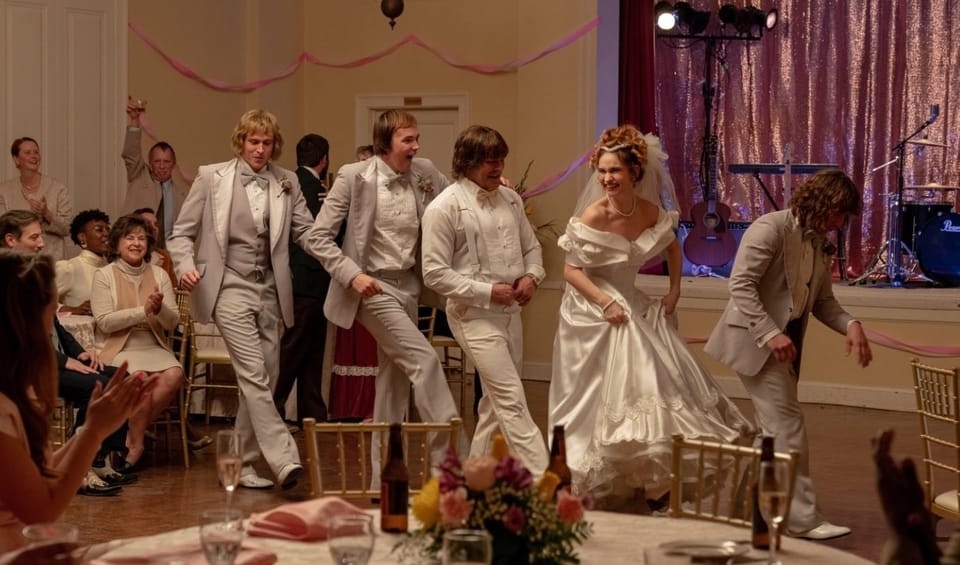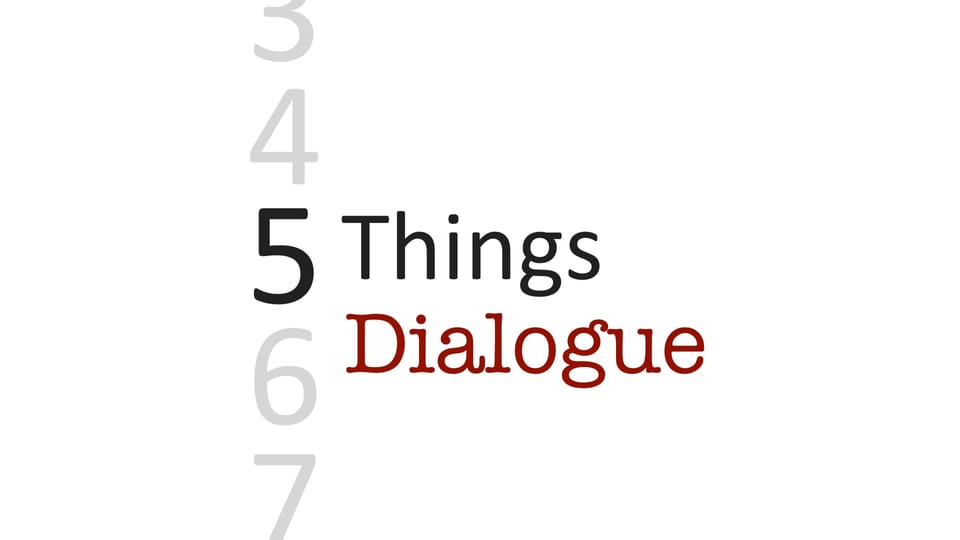Why Subtext is Overrated.
Subtext is usually positioned as something evasive that requires talent and nuance to capture. Another one of those elusive things people like to wield as a weapon to make themselves feel better and writers feel worse.

The Story and Plot Weekly Email is published every Tuesday morning. Don't miss another one.
You will see the complaint often from young readers doing coverage, "There's no subtext!" or "Everyone says exactly what they mean!"
Subtext is usually positioned as something evasive that requires talent and nuance to capture. Another one of those elusive things people like to wield as a weapon to make themselves feel better and writers feel worse.
But pursuing subtext as a goal can be terrible for your writing. Doing so:
- It focuses you on something that doesn't actually improve the scene.
- Emphasizes subtly as a goal rather than clarity.
- It makes it more difficult to diagnose what isn't working.
SUBTEXT IS NOT A GOAL.
It's a byproduct of other more important goals.
First, let's define what we mean by subtext. I actually never worry about subtext, so I never bothered with a definition! But generally, it's understood to be:
The implicit meaning of a line that is not definitively stated.
But it has also become so generalized that it has spread to cover physical actions with layered meaning as well.
No doubt, people saying something other than what they mean is part of the human experience. But more often, people are desperately trying to say exactly what they mean, they just find it incredibly difficult to do so. People long to be understood far more than they don't.
In addition, just about every great line in movie history is smack dab, right on the nose - damn the subtext.
- "Frankly, my dear, I don't give a damn."
- "We're going to need a bigger boat."
- "I see dead people."
- "You complete me."
On-the-nose dialogue obviously isn't a problem in and of itself.
Why? Because the audience is not looking for subtext. They do not care about subtext.
The thing they care most about is emotional truth.
All those moments of characters saying exactly what they mean work because the characters and stories earned it.
They did not ring false. They were emotionally truthful.
And that's your goal.
Focus on that, and the subtext will come. Or it won't. Because it's not needed.
Either way, it will be much more interesting for the audience.
HOW SUBTEXT EMERGES WITHOUT YOU TRYING
In my classes, I teach character as two primary things:
- What a character wants.
- What a character is willing to do to get it.
These two factors comprise a character's choices, which you, the author of the piece, decide.
What the character wants will be their throughline for any scene they're in. What they're willing to do to get this want will dictate their tactics.
Their tactics dictate what most people refer to as... subtext.
Your job is to make these tactics compelling to watch and emotionally truthful. If one tactic fails, they change it.
If a husband or wife suspects their spouse is cheating, your choice is not the subtext, but their tactic.
Perhaps they confront them directly. This tactic will produce less subtext. Unless...
They want them to be cheating because of their own cheating. That extra layer adds more subtext.
But you didn't decide to add more subtext. You changed what the character wanted. And by playing that truthfully, subtext came along for the ride.
Say this same husband or wife decides not to confront their spouse. But instead asks casual questions, trying to trip up their answers to reveal something.
This scene has layer upon layer of subtext because both characters have secrets. They both know the spouse is cheating, but one doesn't know what the other knows, and neither wants to reveal anything.
But it's the same equation:
- What a character wants.
- What a character is willing to do to get it.
The conflict comes from characters having wants that oppose each other. One wants to reveal the secret, the other wants to keep it.
The subtext is derived from the tactics each character has chosen. Whether these tactics are conscious choices or unconscious coping mechanisms, make no difference.
HOW TO FIX A SCENE THAT ISN'T WORKING.
If you think a scene isn't as compelling as it could be, adding "more subtext" is the wrong direction.
Instead, you would change a character's tactics or what information the character knows, which would then affect those tactics.
Perhaps you would change what the audience knows, revealing more of what was happening.
All of these decisions would lead naturally to different or more subtext. But adding more subtext as a goal itself is likely to diffuse your scene rather than add to it.
Focus on the things that matter: A character's want, their tactics in getting it, and the emotional truth of the scene.
And then how do you put it together in the most compelling way possible?
The subtext will take care of itself.
Simplify, simplify, simplify.
It's what my teaching is all about.
Hope this helps!
Through July, the weekly email will focus on character and dialogue.
I'm looking forward to it!
CREATIVE HAVEN PODCAST
This week I guested on a podcast called Creative Haven. Mitchel Dumlao has spent 20 years creating video content for clients and now runs his own whop out of Austin. The discussion covers screenwriting, the WGA strike, AI, and teaching at UH.
Click here to listen to the podcast.
That's it for this week!
Hope this was helpful. Let me know what you think of the email policy, switching up the order of the sections, or if I should just remove all non-screenwriting sections altogether.
This is a lot of experimenting, and I want to make it the best it can be.
Sincerely,
Tom Vaughan
The Story and Plot Weekly Email is published every Tuesday morning. Don't miss another one.
When you're ready, these are ways I can help you:
WORK WITH ME 1:1
1-on-1 Coaching | Screenplay Consultation
TAKE A COURSE
Mastering Structure | Idea To Outline




